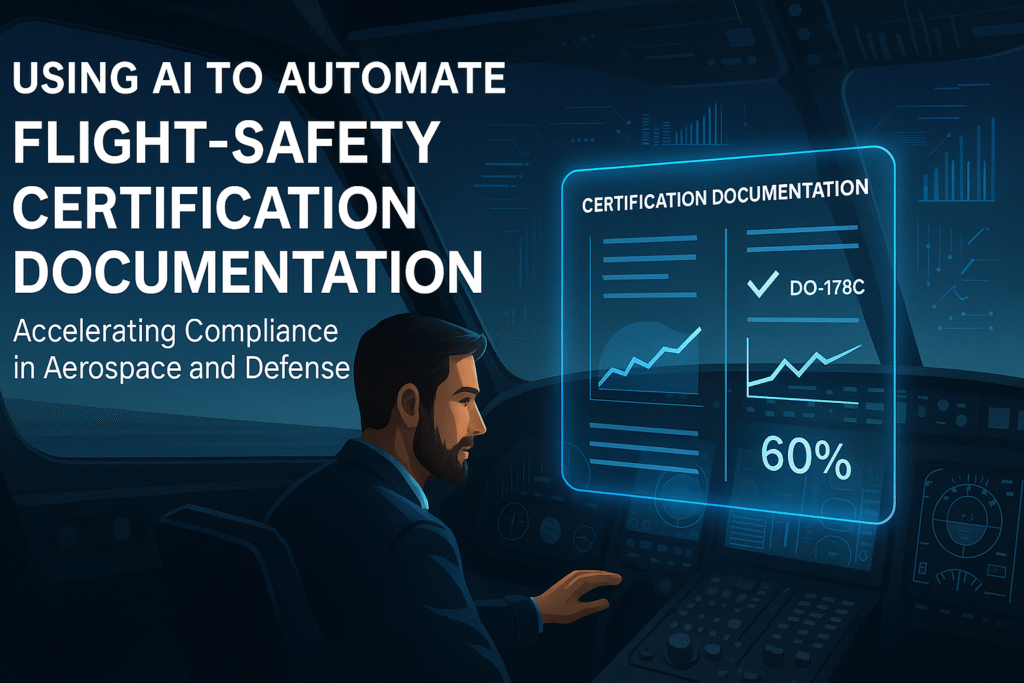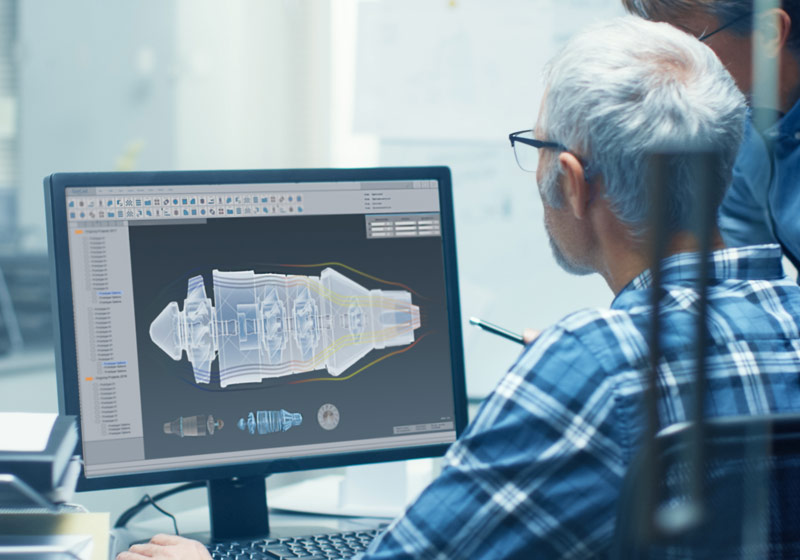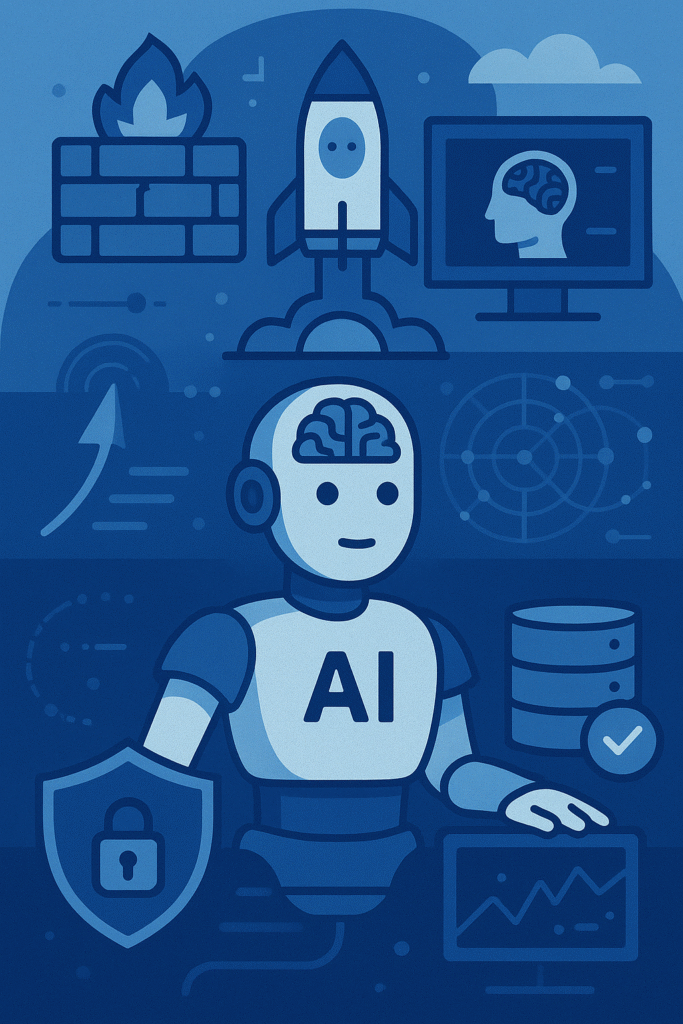Accelerating Compliance and Reducing DO-178C Timelines with Intelligent Automation
The Certification Bottleneck in Aerospace Programs
Flight safety certification has become one of the most time-consuming and costly phases in aerospace development. A typical commercial aircraft generates over 100,000 pages of safety-critical documentation, while military programs often double that volume.
With engineers spending 30–40% of their time drafting reports, traceability matrices, and verification summaries, these manual workflows can delay critical deliveries by months or even years. As programs grow in complexity, regulatory rigor (DO-178C, DO-254, MIL-STD-882E) leaves little room for error or shortcuts.
AI automation is changing that equation.
How AI is Redefining Flight-Safety Documentation
Modern GPT-based AI systems are purpose-built for the structured, technical language of aerospace compliance. Unlike generic automation tools, these models understand regulatory context, engineering hierarchies, and traceability logic—allowing them to produce documentation that meets certification standards while cutting timelines by 40–60%.
Key Capabilities Include:
- Automated Document Generation: Creates Software Requirements, Safety Assessments, and Verification Reports based on existing design data.
- Regulatory Traceability: Maps requirements to design, test, and verification artifacts in real-time.
- DO-178C Compliance Checking: Ensures that every section, paragraph, and matrix meets regulatory expectations before review.
- Consistency at Scale: Standardizes formatting, terminology, and numbering across thousands of pages.
These AI systems don’t just “write”—they understand aerospace safety structure, maintain audit-ready traceability, and evolve with program updates.
Inside GPT-Based Documentation Systems
Netray’s AI-powered documentation architecture is trained on aerospace-grade data sets, including:
- Regulatory Frameworks: DO-178C, DO-254, FAR Part 25, MIL-STD-882E.
- Industry Templates: SAE, ARINC, and EUROCAE documentation standards.
- Historical Program Archives: Anonymized certified documentation for real-world accuracy.
When connected to existing PLM or ALM systems (like Siemens Teamcenter, IBM DOORS, or PTC Windchill), the AI can automatically:
- Ingest updated requirements and test results.
- Generate corresponding documentation sections.
- Maintain live traceability matrices and impact analyses after each design change.
The result: near-zero redundancy, complete version control, and audit-ready outputs that align with both FAA and EASA certification standards.
Case Studies: Measurable Impact
- Commercial Avionics Software (DO-178C DAL A)
A leading avionics OEM integrated Netray’s AI into its Polarion ALM system for a new flight management computer.
- Documentation time: Cut from 18 months to 6 months
- Authority findings: Reduced by 40%
- Engineer utilization: 30% more time available for design work
- Defense Electronic Warfare System
A U.S. Air Force contractor applied AI models across software, hardware, and cybersecurity documentation.
- Compliance accuracy: 95% first-pass success
- Timeline savings: 8-month reduction
- Labor savings: $2.3M in documentation costs
Human Oversight and Quality Assurance
AI-generated documentation is never “hands-off.”
Netray’s process incorporates human-in-the-loop validation, ensuring technical and regulatory accuracy through three tiers:
- Automated AI Quality Gates — compliance and consistency verification
- SME Review — engineering and safety validation
- Certification Readiness Check — final regulatory and audit compliance
These combined reviews ensure the AI accelerates documentation while preserving human judgment where it matters most.
The Strategic Advantage
Beyond saving time and cost, AI-powered certification documentation brings lasting competitive benefits:
- Faster Program Bids: Accurate cost and schedule estimates improve proposal success.
- Scalable Operations: Multiple programs can run concurrently without scaling documentation teams.
- Higher Compliance Confidence: Consistent formatting and traceability reduce audit risks.
In an industry where certification delays can cost millions per aircraft, automation is no longer a luxury—it’s a strategic necessity.
The Road Ahead: Intelligent Compliance
As AI maturity grows, aerospace regulators are evolving too. FAA and EASA are developing frameworks to qualify AI-assisted documentation tools under new AI assurance guidelines.
Forward-looking companies are already building internal AI “documentation hubs” that unify compliance processes across software, hardware, and systems engineering.
Conclusion: From Bottleneck to Breakthrough
AI-driven documentation is revolutionizing how aerospace organizations achieve flight safety certification. By combining GPT-based intelligence with domain-trained compliance frameworks, Netray’s solutions are helping OEMs and defense primes cut certification timelines by half—without compromising safety, quality, or compliance integrity.



